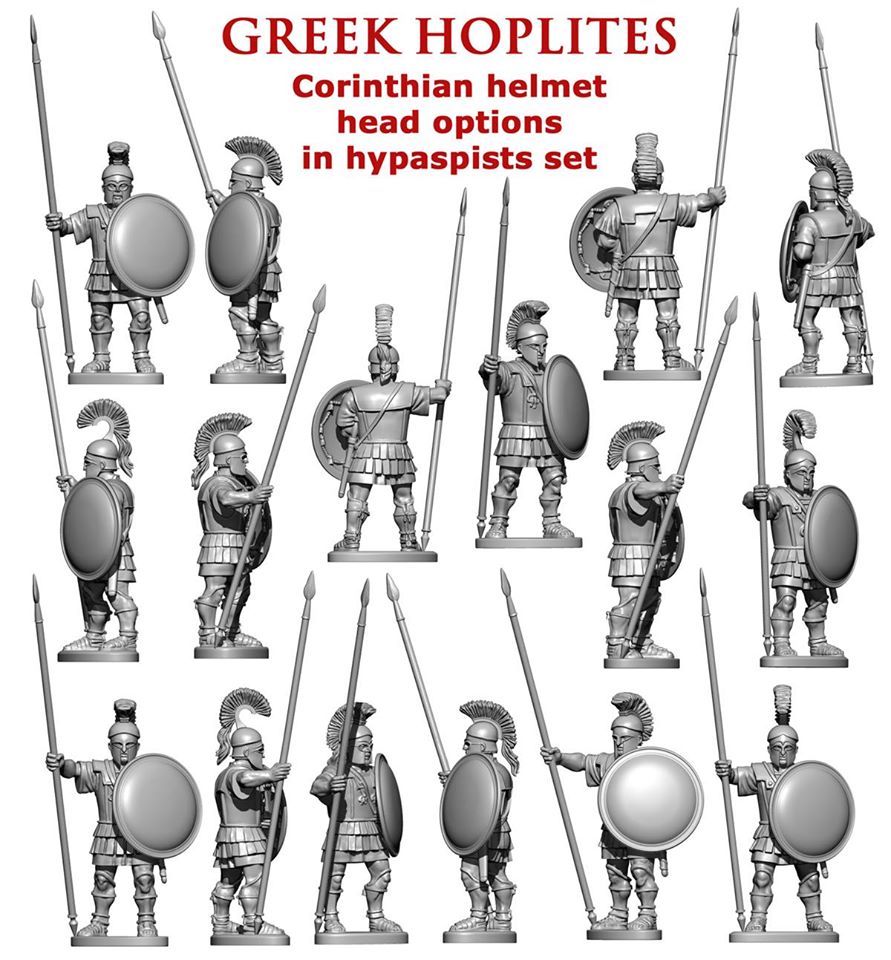

Mercenaries were beginning to form large parts of the main armies. Wide spread, javelin-throwing troops became commonplace, and Persian Wars and the Peolponnesian War the Greek army went under These light hoplites however were not wide spread and the Greek The northern Polises began to use a type of hoplite that wore little or no armor called an Ekdromoi, It was also used as a secondary weapon if the main shaft snapped, or for the rear ranks to finish off fallen opponents as the phalanx advanced over them. The spearhead was usually a curved leaf shape, while the rear of the spear had a spike called a sauroter ('lizard-killer') which was used to stand the spear in the ground (hence the name). It was held one-handed, the other hand holding the hoplite's shield. Although accounts of its length vary, it is usually now believed to have been seven to nine feet long (~2.1 – ~2.7m). The primary weapon was a spear called a dory. It spanned from chin to knee and was very heavy. Hoplites carried a circular shield called an aspis (often referred to as a hoplon) made from wood and covered in bronze, measuring roughly 1 metre in diameter. Skins made by King Louise Assurbanipal for TW The Thracian helmet had a huge visor to further increase protection. The crests on the helmet differed for each city-state. Later variants included the Chalcidian helmet, a lightened version of the Corinthian helmet, and the very simple Pilos helmet worn by the later Spartan hoplites. The Corinthian helmet was at first standardised and was a very successful design. The design of the helmets used varied through time. Greaves were the leg protection and were made to conform to the legs and leg muscles of the user ( source). The richer upper-class hoplites typically had a bronze breastplate of either the bell or muscled variety, a bronze helmet with cheekplates, as well as greaves and other armour.
#Simple hoplite shield designs plus#
Only a shield, a spear, and perhaps a helmet plus a secondary weapon. The average farmer-peasant hoplite typically wore no armour, carrying The linothorax was the most popular type armour worn by the hoplites, since it was cost-effective and provided decent protection. Most cuirasses where customized, which often contributed toĬonfusion on the battlefield. Stitched/laminated linen fabrics that was sometimes reinforced withĪnimal skins and/or bronze scales. Super expensive bronze-jointed cuirass to the relatively common tunicĪ more well-to-do hoplite would have linothorax, armour composed of The body was protected by a cuirass, cuirasses typically ranged from the Hoplite equipment ranged from light to heavy – the total weight of a set of heavy bronze breastplate armour was around 22–27 kilograms (49–60 pounds). Hoplites generally armed themselves just before battle. The equipment might well be passed down in families, since it would have been expensive to manufacture. Hoplites had customized armour, and possibly family symbols on his shield. Equipment was not standardised, although there were doubtless trends in general designs over time, and between city-states. Thus, only those who could afford such weaponry fought as hoplites as with the Roman Republican army it was the middle classes who formed the bulk of the infantry. The Lacedaemonian citizens (Sparta) were renowned for their lifelong combat training and almost mythical military prowess, while their greatest adversaries, the Athenians, were exempted from service only after the 60th year of their lives.Įach hoplite provided his own equipment. They were expected to take part in any military campaign when they would be called for duty. In most Greek city-states, citizens received at least basic military training, serving in the standing army for a certain amount of time.
#Simple hoplite shield designs free#
Hoplite armor was the most sophisticated of its time and would only be bested by the armor of the Roman Legionnaires.Ī hoplite was primarily a free citizen who was usually individually responsible for procuring his armour and weapon. The most common, known by everyone and used around the whole Greece was a heavy infantry hoplite.

Later on the Greek armies got more versatile as light infantry, the peltasts, and cavalry were added, but the hoplite remained by far the most important unit. Macedonian Phalangites - Macedonian hoplite (hoplite with a long pike and small shield)Ī hoplite is nothing more than a heavy armed and armoured foot-soldier, but the Greek armies depended on them as they formed the feared phalanx.Ifkratican Hoplite - reformed hoplite (light hoplite with a longer spear and smaller shield).Ekdromoi - light hoplite (support unit).I'm not a historian but I think we can distinguish 4 main types of hoplites.


 0 kommentar(er)
0 kommentar(er)
